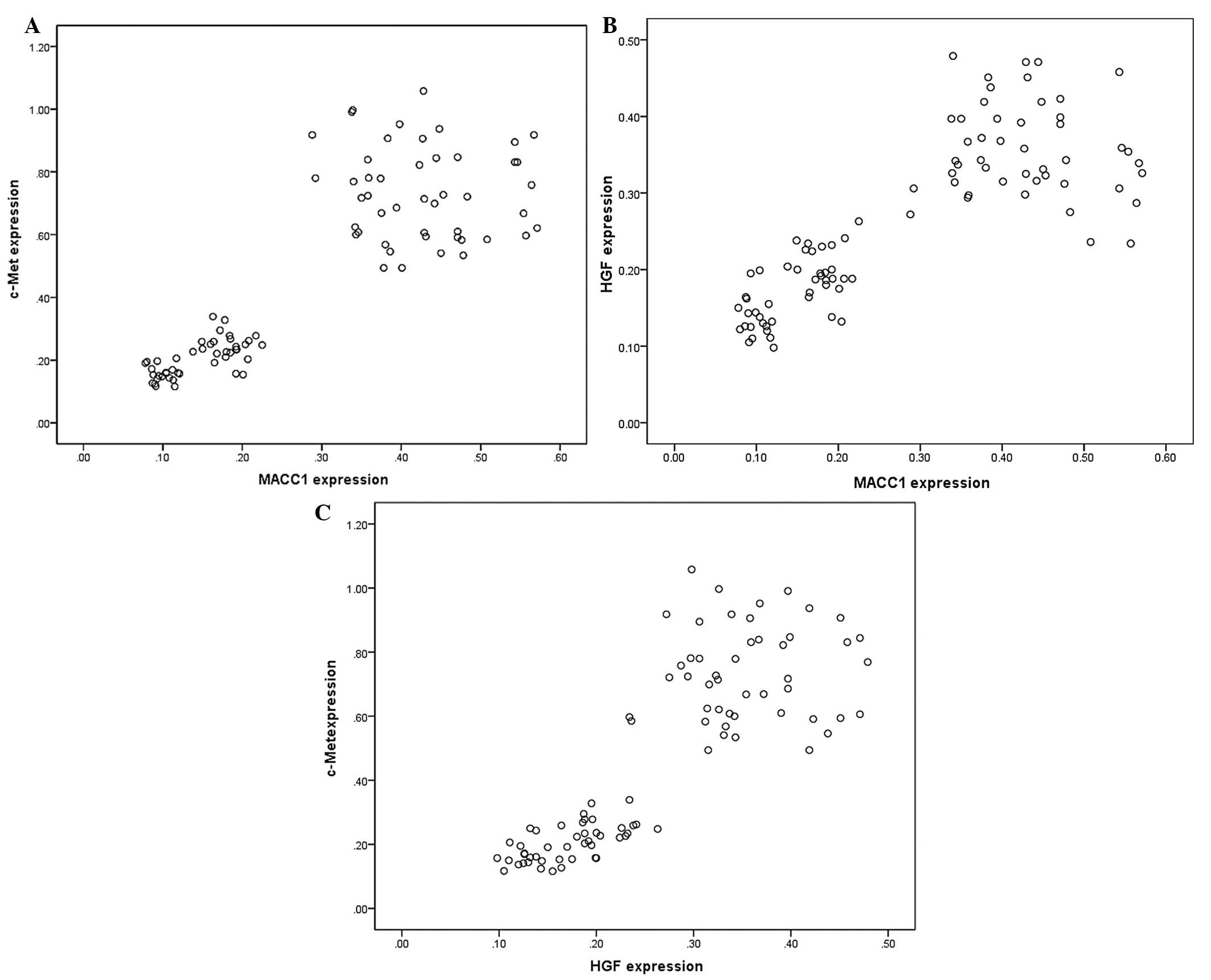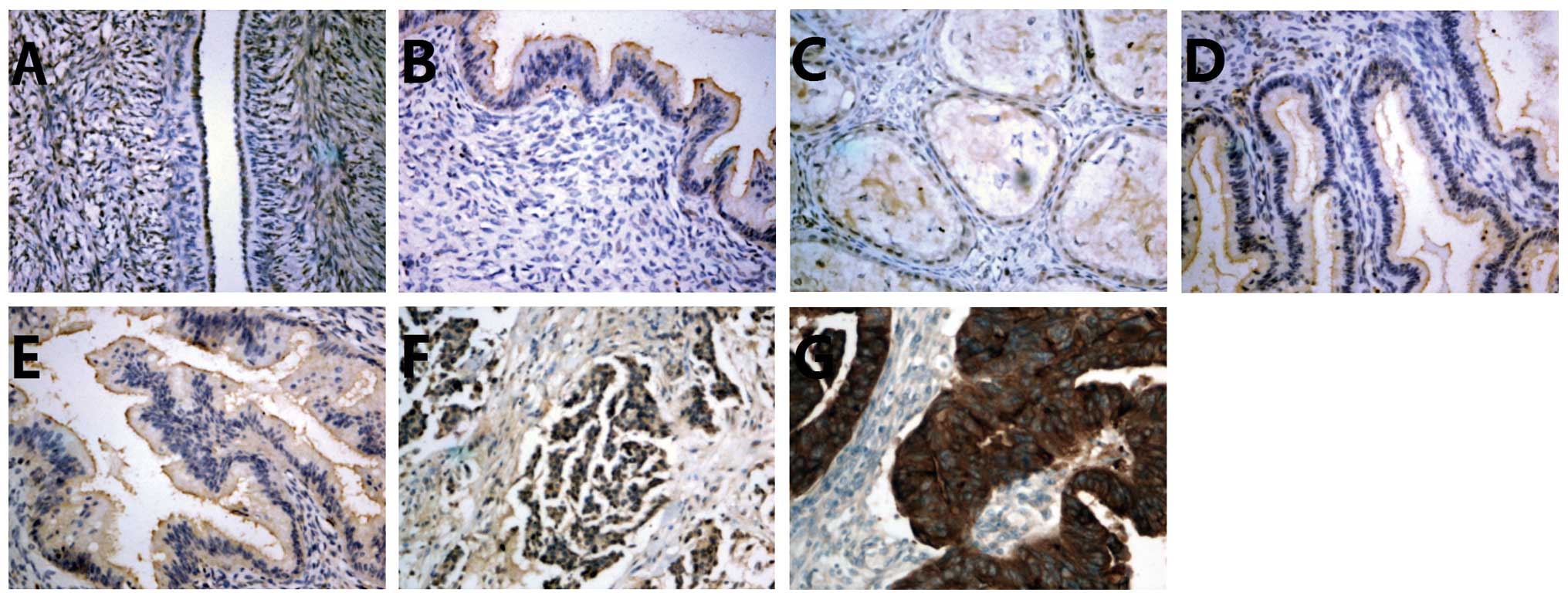Overexpression of MACC1 and the association with hepatocyte growth factor/c-Met in epithelial ovarian cancer
- Authors:
- Published online on: February 25, 2015 https://doi.org/10.3892/ol.2015.2984
- Pages: 1989-1996
-
Copyright: © Li et al. This is an open access article distributed under the terms of Creative Commons Attribution License.
Metrics: Total
Views: 0 (Spandidos Publications: | PMC Statistics: )
Total PDF Downloads: 0 (Spandidos Publications: | PMC Statistics: )
Abstract
Metastasis‑associated in colon cancer‑1 (MACC1) is a gene that has been newly identified by a genome‑wide search for differentially expressed genes in human colon cancer tissues, metastases and normal tissues. MACC1 exerts an important role in colon cancer metastasis through upregulation of the c‑Met proto‑oncogene. The tyrosine kinase receptor encoded by the c‑Met oncogene exhibits the unusual property of mediating the invasive growth of epithelial cells upon binding with the hepatocyte growth factor (HGF). MACC1 has been investigated with regard to colon carcinoma and MACC1 expression is associated with metastasis in various types of human cancer. However, the value of MACC1 as a potential biomarker for ovarian cancer remains unknown, although the c‑Met/HGF receptor has been shown to be overexpressed in epithelial ovarian cancer tissues. To investigate the role of MACC1 in epithelial ovarian tumors, the expression levels of MACC1 mRNA in ovarian tumor specimens were analyzed together with the prognostic significance. MACC1 protein expression was also detected in the epithelial ovarian tissue specimens, and the effects of MACC1 overexpression on ovarian cancer migration, invasion and prognosis were evaluated. Due to the close association between MACC1 and c‑Met expression levels in colon cancer, the expression levels of HGF/c‑Met in the ovarian specimens were also examined to determine whether such a correlation is also present in epithelial ovarian cancer. A total of 92 epithelial ovarian tissue samples were used to assess the expression levels of MACC1 mRNA and protein using reverse transcription‑polymerase chain reaction and immunohistochemical methods, respectively. The serum levels of MACC1 protein expression in patients with epithelial ovarian cancer were detected by enzyme‑linked immunosorbent assay. The results indicated that MACC1 may be important in the malignant progression of epithelial ovarian tumors, in particular for early stage patients. Thus, MACC1 may become a predictor of prognosis and a therapeutic target in the treatment of ovarian tumors. The combined detection of MACC1 and HGF/c‑Met is therefore important in assessing the prognosis of patients with malignant epithelial ovarian tumors.












